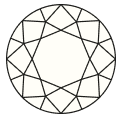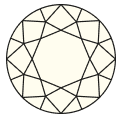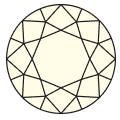get to know the sparkle
Diamond Guide
We understand what an important decision it is to buy a diamond and are here to help you with any questions you may have. When deciding on a natural or lab-grown diamond for your Sarah O. piece, know that neither diamond is “better” than the other. What matters is the significance you put into your diamond and what it means to you!
The 4 Cs of Diamonds
These are the industry-standard qualities used to evaluate diamonds.
Cut
Refers to a diamond’s depth, width, and how its facets refract light









Clarity
Determined by its unique characteristics, known as inclusions





Color
Denotes the absence of color naturally occurring in the diamond





Carat
Refers to a diamond’s weight, which also correlates to apparent size






Natural vs. Lab-Grown Diamonds
About The Stones
Natural
Natural diamonds were formed, on average, 100 miles below the Earth’s surface.
Lab-Grown
Lab-grown diamonds have the same chemical, physical, and optical properties as natural diamonds.
How They’re Made
Natural
Natural diamonds are made of molten rock and are formed under rare conditions of extreme heat and pressure that causes the carbon atoms to crystalize.
Lab-Grown
Lab-grown diamonds are produced in a laboratory in approximately 2-3 weeks. There are two types of processes that are used in creating a lab-grown diamond, HPHT and CVD.
Availability
Natural
A natural diamond is formed (naturally) under ground in an uncontrolled environment. This means that there are a finite number of natural diamonds, which make them rare.
Lab-Grown
Lab-grown diamonds are not finite due to the ability to be grown on-demand in a laboratory.
Sustainability
Natural
Our stones have been carefully selected for their ethically and environmentally responsible origins. All diamonds sourced by Sarah O. comply with the Kimberley Process, a commitment to remove conflict diamonds from the global supply chain.
Lab-Grown
These stones are 100% mine-free.
FAQs
While natural diamonds and lab-grown diamonds have the same chemical, physical, and optical properties, the rarity of a natural diamond is what truly sets the two apart from each other. Natural diamonds are finite and rare whereas there is no limit to how many lab-grown diamonds can be made in the future. This can ultimately impact the value of a lab-grown diamond overtime.
There is no visual difference to the naked eye between a natural diamond and lab-grown diamond. They all have varying types of color, clarity, size, and shape and score a 10/10 on the Mohs hardness scale. The only way to tell the difference between a natural diamond and lab-grown diamond is with specialized equipment.
There are multiple factors to consider when selecting a diamond. If you are drawn to the rarity of a diamond and the value that it holds overtime, a natural diamond may be for you. If the price, size, or sustainable origins of the stone are most important to you, a lab-grown diamond may be the right fit.
Although a moissanite stone is clear in color like a diamond, it is a diamond simulant and is not the same chemical substance as a diamond.